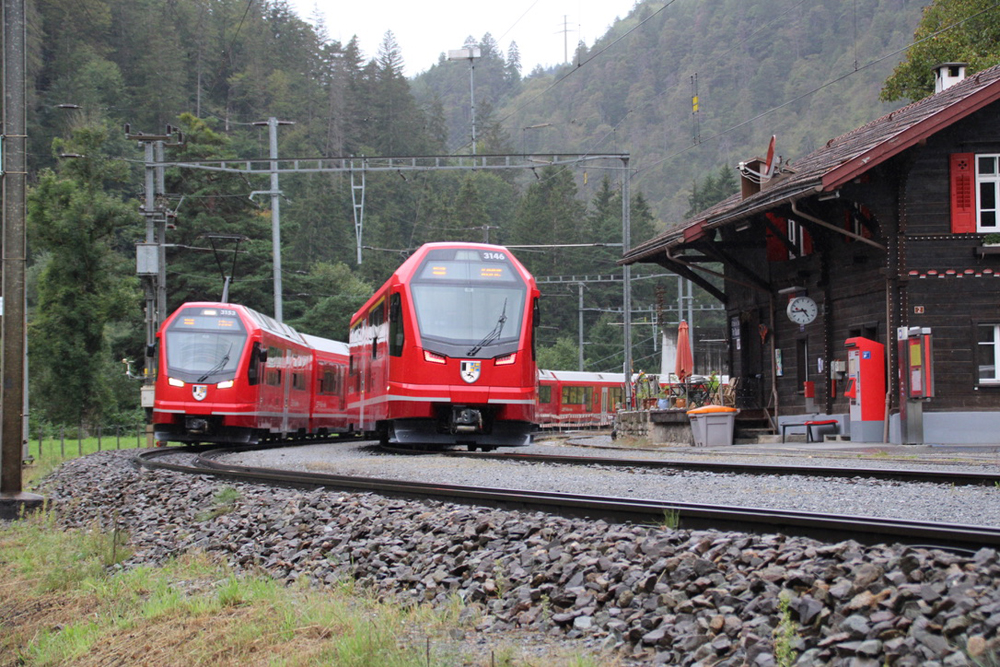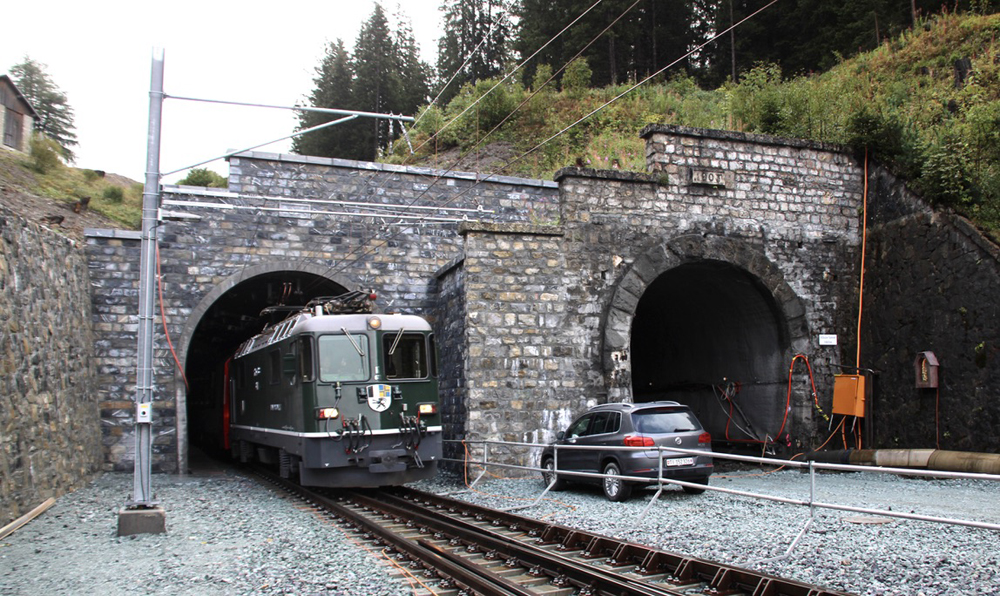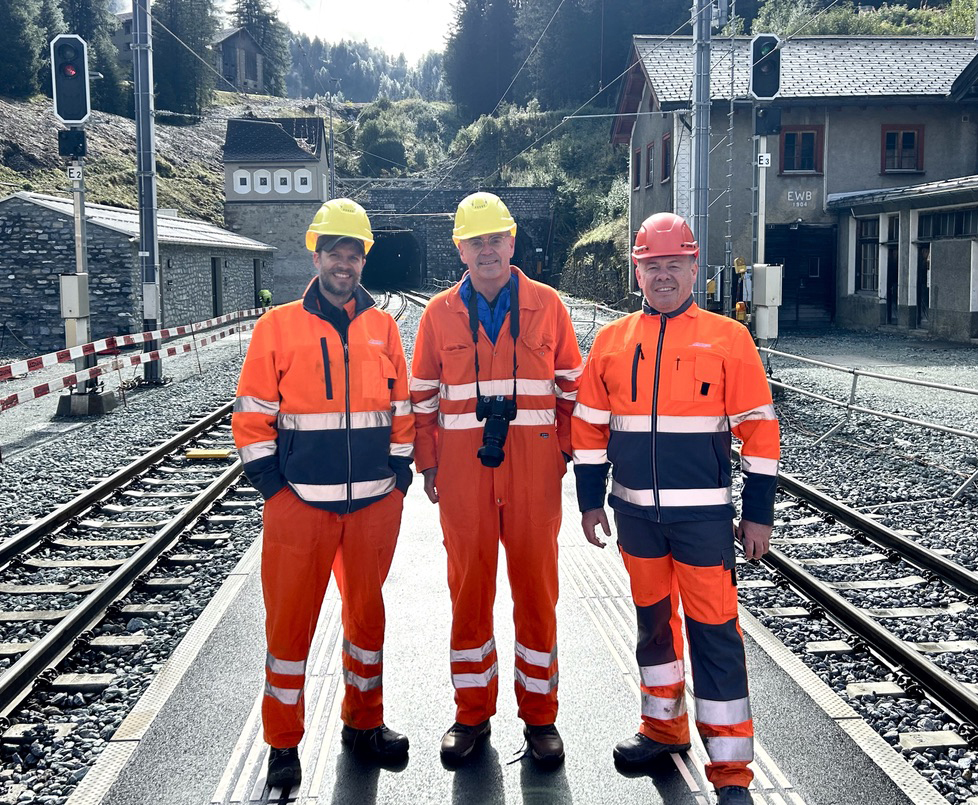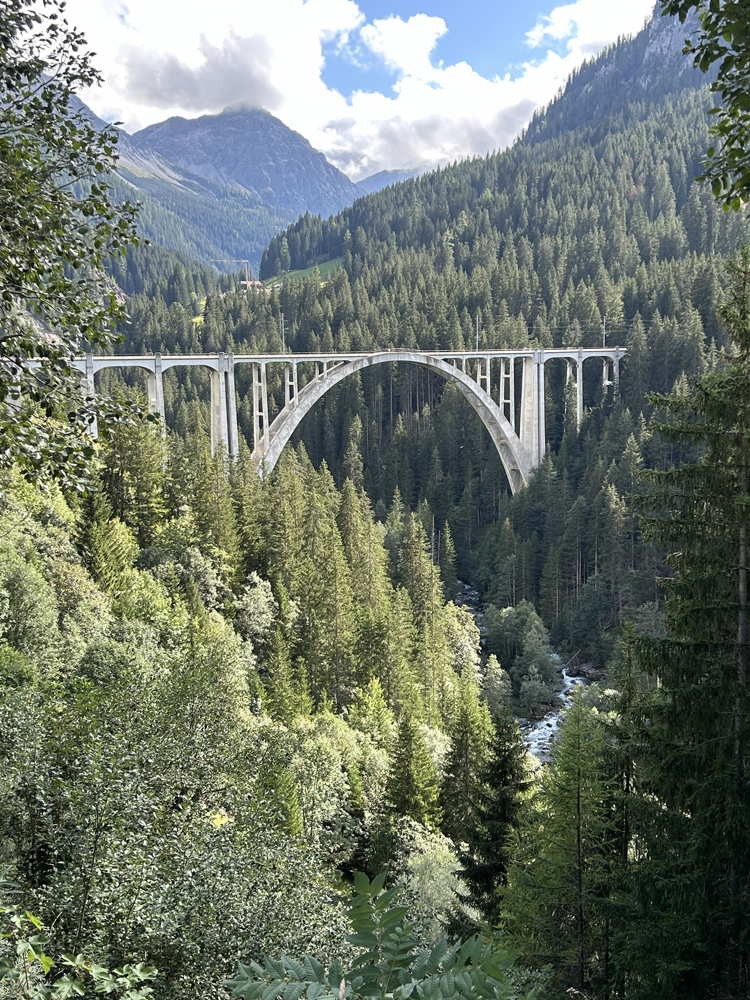
CHUR, Switzerland — I’m baack …
For the second year in a row and third time since joining Trains Magazine, your senior editor is wandering Switzerland by train, developing some stories for the magazine. While this is my first blog post from this trip, it’s actually day three of my 2024 visit. I’ve been on the go quite a bit since I got here, and not only am I somewhat running on fumes, but I have some work to attend to before calling it a night. So I’ll start playing catch-up by summarizing the first two days, and eventually, we’ll get completely up to date.
My schedule is such that, unlike a year ago, there is very little chance I will blog on a daily or even near-daily basis. But I’ll do what I can.
Anyway, our story so far (Part I):
Monday, Sept. 9
Swiss flight LX7 touched down in Zurich at 6:13 a.m., just 3 minutes after its scheduled arrival — darned good by airline standards considering that Sunday’s departure from O’Hare Airport was at 2:20 p.m., but actual takeoff didn’t come until 3:01. Still, as close to on-time as we were, that would not have met the Swiss railway standard for punctuality, which require arrival within 2 minutes, 59 seconds of that in the timetable. Equally Swiss in terms of efficiency was that I had cleared passport control, baggage claim, and customs by 6:44 a.m., surprising even Danielle, my contact from Switzerland Tourism (now known as “Travel Switzerland”), who actually came out to the airport at that ungodly hour to meet me and have coffee. She had expected to have to wait for me after arriving on a 7:12 a.m. train.
After a good first meeting that also allowed us to wrap up some details for the latter portions of the trip, we caught a train to Zurich Hauptbahnhof, the city’s main train station, where she went off to work and I caught the first of the day’s five trains to reach Chur [pronounced “Coor”], where I’m spending the first four nights. (For those of you keeping score at home, the routing was: Zurich HB > Arth-Goldau > Göschenen > Andermatt > Disentis/Mustér > Chur).
Now, if you know Switzerland, you’ll immediately recognize this a tremendously indirect routing — I could have taken a direct Zurich-Chur train and arrived in as little as 74 minutes. Instead, my route involved trains from four companies and of two gauges, and consumed some 4 hours, 57 minutes, including layover time (thankfully brief). But my hotel room wasn’t going to be available before 2 p.m., and this put me into Chur at 2:02 p.m. And I’m here to report on trains in Switzerland, so why not maximize my time riding them? Also, this routing both allowed me to once again visit Gotthard Pass, a favorite location [see “Gotthard Pass revival,” March 2024 Trains], and to cover the westernmost segment of the Rhätische Bahn (English: Rhaetian Railway, but I’m mostly just going to go with the German abbreviation, RhB). The latter point matters because the whole reason I’m spending four nights in Chur is to work on a feature on the RhB, the amazing meter-gauge railway headquartered here. The railway is going above and beyond in playing host, as you shall see.
The final part of my day was a short photo expedition to a couple of spots I’d seene earlier. Above is one of the resulting photos, from Trin, a flagstop about 8.1 miles west of the Chur train station. The westbound train, at right, is holding for the eastbound train to arrive.
Tuesday, Sept. 10

Up early to for a short walk to the Chur station to meet two RhB officials and take a 90-minute train ride with them to Preda to visit the new Albula tunnel, a 5.98-kilometer (3.72 mile) single-track bore that opened this year, replacing a tunnel completed in 1903. My hosts on this day were Paul Loser (which is not, in German, pronounced like it looks to Americans — we joked about that), the project manager for the Albula Tunnel construction and head of viaducts and tunnels for the railroad; and Markus Zaugg, manager of rolling stock. Markus — who at one time spent four years with Swiss Air in San Francisco and so speaks terrific English — was along because we had plans for the second part of the day, and to serve as an interpreter, where needed, for Paul. Paul’s English was very good, but once in a great while Markus’ presence proved helpful, usually for technical matters.
The tunnel visit was fascinating. We could not enter the new tunnel because it is in operation but I was able to see how carefully its construction had to be managed because the Albula rail line is a UNESCO World Heritage Site, meaning the tunnel work faced extremely exacting preservation requirements. And we did walk into the old tunnel — now stripped of its track, catenary, and most other rail operation hardware — for more than 400 yards, to see the kind of deterioration that made its replacement necessary, and to see the first of the 12 cross-passages that have been constructed to connect the new and old tunnels as part of an emergency evacuation system. The old tunnel will strictly become an emergency access route; repairing and preparing it for that role will take another two years. It’s hard to take pictures in a dark tunnel, so for your amusement, I’ll share this photo of yours truly in the safety gear required for the visit, flanked by Markus (left) and Paul. This was taken by the safety spotter on duty, since this remains an active construction site.

Paul left us there to attend meetings; Markus and I rode back from Preda to Landquart, where the RhB has its main shops. This, as Markus put it, is his kingdom. He oversees all the equipment and its maintenance, and he was kind enough to give me an absolutely priceless tour of the facilities that repair and maintain the railroad’s extensive locomotive, car, and maintenance equipment fleet. Notably, he is also in charge of the railroad’s 72-piece heritage fleet, which includes three steam locomotives, a steam rotary snowplow, some historic electric locomotives, and all sorts of rolling stock of historic significance. Personally, I particularly liked the two “Crocodile” electrics, one of which would normally be handling the train’s regularly operating heritage train. Both, however, are down for repairs at the moment. You’ll hear a lot more about this tour at a future date.
Once that was done, I had planned to come back to my hotel and take a nap. But the sun was out — which apparently will be a rarity on this trip, based on current forecasts — so I instead jumped on another train and rode most of the way up a branch line to Arosa. I say most of the way because as we neared the station at Langwies, I looked out the train window and saw this:

I immediately jumped off and stayed there to get a photo of a train crossing that bridge. You’ll have to wait and see it in the magazine. Let’s just say it was worth spending a couple of hours there.
There’s more to be said about the Arosa line, but that — like the rest of the trip to date — will have to wait.










Lookin’ good in orange, Lassen! Such a smart move to pop off for the Langwieser Viaduct pix — can’t wait to see the results of your efforts in Trains Magazine… anything for the shot!